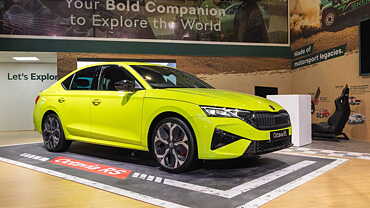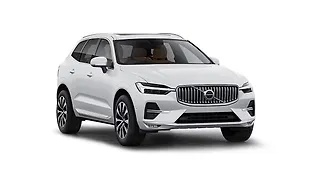
Autonomous vehicles have caught the fancy of many, thanks to experimental efforts from brands including Volvo, Mercedes-Benz and even internet giant Google. And it’s the former brand that has been at the forefront to take the piloted driving technology to whole new levels.
Volvo, in fact, has just released more details of its advanced user interfaces that oversee how drivers will transfer control to a car’s autonomous driving mode in its forthcoming models. In this latest update, Volvo has explained the start and end process for its IntelliSafe Auto Pilot feature.
The IntelliSafe autonomous mode is activated and deactivated with a special pair of paddles on the steering wheel. When the car detects that it’s entering a route where autonomous driving is available, it will alert the driver saying that the Auto Pilot is ready. At the same time, lights on the paddles will also start flashing. On the other hand, when autonomous driving is no longer available, the driver is prompted to take over again with a sixty-second countdown that is displayed on the instrument cluster.
This new piloted driving technology will be available for the first time on 100 XC90 cars that are part of the Drive Me project in Gothenburg, Sweden. The Drive Me project, which involves 100 self-driving Volvos available to families and commuters around Gothenburg for use in everyday driving conditions, is billed to be the world’s most ambitious autonomous driving project when it takes off in 2017.
The advent of autonomous driving technology means that the relationship between a driver and a car’s user interface is of crucial significance. A safe handover of control, then, is the keystone of any new trustworthy autonomous driving technology. This probably explains the painfully extensive testing that Volvo is currently undertaking before it makes its IntelliSafe autonomous mode available for general public.
![Volvo XC90 [2015-2021] Image Volvo XC90 [2015-2021] Image](https://imgd.aeplcdn.com/272x153/cw/ec/18626/Volvo-XC90-Right-Front-Three-Quarter-164462.jpg?wm=0&q=80)















![Volvo XC90 [2015-2021] Right Front Three Quarter Volvo XC90 [2015-2021] Right Front Three Quarter](https://imgd.aeplcdn.com/199x112/cw/ec/18626/Volvo-XC90-Right-Front-Three-Quarter-164462.jpg?wm=0&q=80)
![Volvo XC90 [2015-2021] Right Front Three Quarter Volvo XC90 [2015-2021] Right Front Three Quarter](https://imgd.aeplcdn.com/199x112/ec/45/72/18626/img/m/Volvo-XC90-Right-Front-Three-Quarter-52850_ol.jpg?v=201711021421&q=80)
![Volvo XC90 [2015-2021] Right Front Three Quarter Volvo XC90 [2015-2021] Right Front Three Quarter](https://imgd.aeplcdn.com/199x112/ec/45/72/18626/img/m/Volvo-XC60-Right-Front-Three-Quarter-51459_ol.jpg?v=201711021421&q=80)
![Volvo XC90 [2015-2021] Steering Wheel Volvo XC90 [2015-2021] Steering Wheel](https://imgd.aeplcdn.com/199x112/cw/ec/18626/Volvo-XC90-Steering-Wheel-76968.jpg?v=201711021421&q=80)
![Volvo XC90 [2015-2021] Interior Volvo XC90 [2015-2021] Interior](https://imgd.aeplcdn.com/468x263/cw/ec/18626/Volvo-XC90-Interior-76972.jpg?v=201711021421&q=80)



























